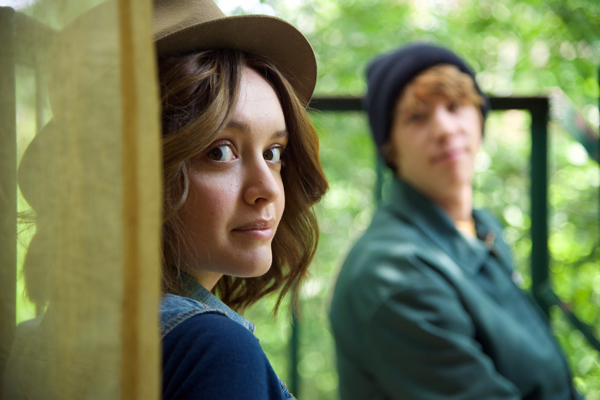Movie review by Greg Carlson
Alfonso Gomez-Rejon’s adaptation of Jesse Andrews’ popular novel “Me and Earl and the Dying Girl” presents delights and dilemmas as it negotiates (and doesn’t negotiate) the rough terrain of terminal illness, race, class, and white male privilege via an irresistibly attractive package aimed squarely at the eye and ear of the cinephile. Like “The Wolfpack,” another movie in which imaginatively staged recreations of cult films are pasted together in DIY delirium, “Me and Earl and the Dying Girl” functions as a Brian Eno-infused clarion call to wannabe auteurs. It’s catnip for Criterion collectors, with onscreen tributes to Herzog, Scorsese, Godard, Lynch, Hitchcock, Kurosawa, Bergman, and others. Notably, the work of Wes Anderson, to which Gomez-Rejon and cinematographer Chung-hoon Chung owe a sizable stylistic debt, is not among the 47 tributes created by animators Edward Bursch and Nathan Marsh, artists who have worked on Anderson films.
As first-time screenwriter, Andrews makes several shrewd alterations in translating his book, but he and Gomez-Rejon stick close to the principal content of the source material. Greg Gaines (Thomas Mann) is a “good kid” who swedes movie parodies with catchy titles like “A Sockwork Orange,” “Pooping Tom,” and “2:48 p.m. Cowboy,” collaborating with his co-worker/best friend Earl Jackson (RJ Cyler). During his senior year of high school, Greg’s mother insists he spend time with Rachel Kushner (Olivia Cooke) following Rachel’s cancer diagnosis, and the awkward boy and doomed girl embark on an acutely self-aware, platonic friendship.
In a lengthy response to Scott Tobias’ negative review, David Ehrlich acknowledges several of the film’s most problematic issues while arguing that the subjectivity attending Greg’s narcissism is vital to the structure of the film and the aims of the narrative. Ehrlich writes, “While ‘Me and Earl’ is on its surface an uncomfortably proud celebration of stories in which enchanted dying girls and magical black men exist only to further the spiritual development of a vanilla white male hero, it’s also a rebuke to the self-absorption that makes those stories possible.” Additionally, Andrews has pointed out that Greg is someone “who hasn’t yet learned to pay attention.”
Even so, films that present the skewed worldview of a flawed or antiheroic protagonist might also include clear critique from supporting characters able to see through the shortcomings of the central personality. And despite Ehrlich’s convincing rationalization, “Me and Earl and the Dying Girl” would have been stronger and richer had the filmmakers made more room for Earl and Rachel. Those two, as well as several of the adults depicted in the movie, do take Greg to task for his selfish behavior. Indeed, two of the best scenes in the film revolve around calling out Greg on his bullshit: Earl delivers an earful along with a punch to the gut and later, in the longest unbroken shot in the movie, Rachel points out that Greg has based his entire experience of their relationship on how Rachel’s leukemia has affected him.
The closest contemporary of “Me and Earl and the Dying Girl” is “The Fault in Our Stars,” and the stories share a great deal of DNA. In my 2014 review of “The Fault in Our Stars,” I mentioned the gender inversion of the Manic Pixie Dream Girl trope embodied by Augustus Waters in John Green’s bestseller, but Rachel’s function in “Me and Earl and the Dying Girl” (note the title’s reduction and diminishment, replacing her name with the bluntest descriptor) is, on the most basic level, business as usual. Cooke is lovely inside and out, and does all she can with the character, even as the Ebert-coined “Ali McGraw’s Disease,” de rigueur in the genre, intensifies and illuminates her physical beauty — particularly in a cinematic swan song that improves on the late events of the novel.
